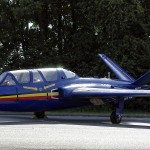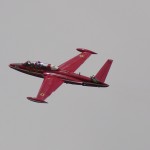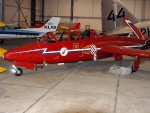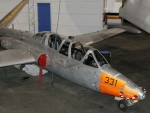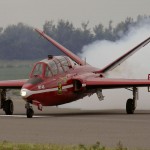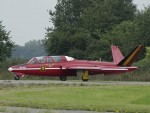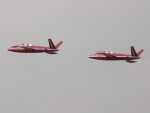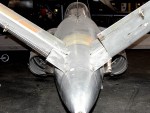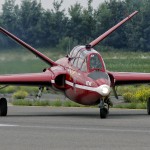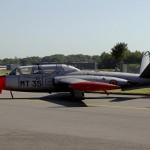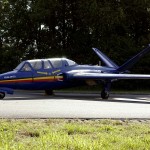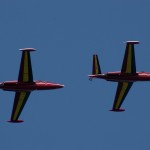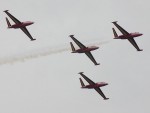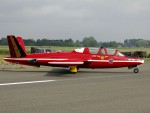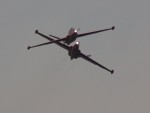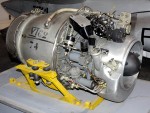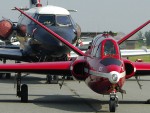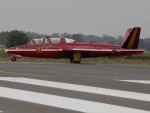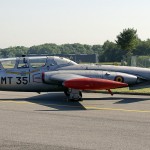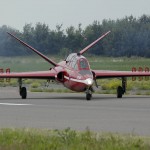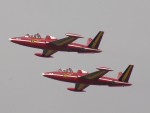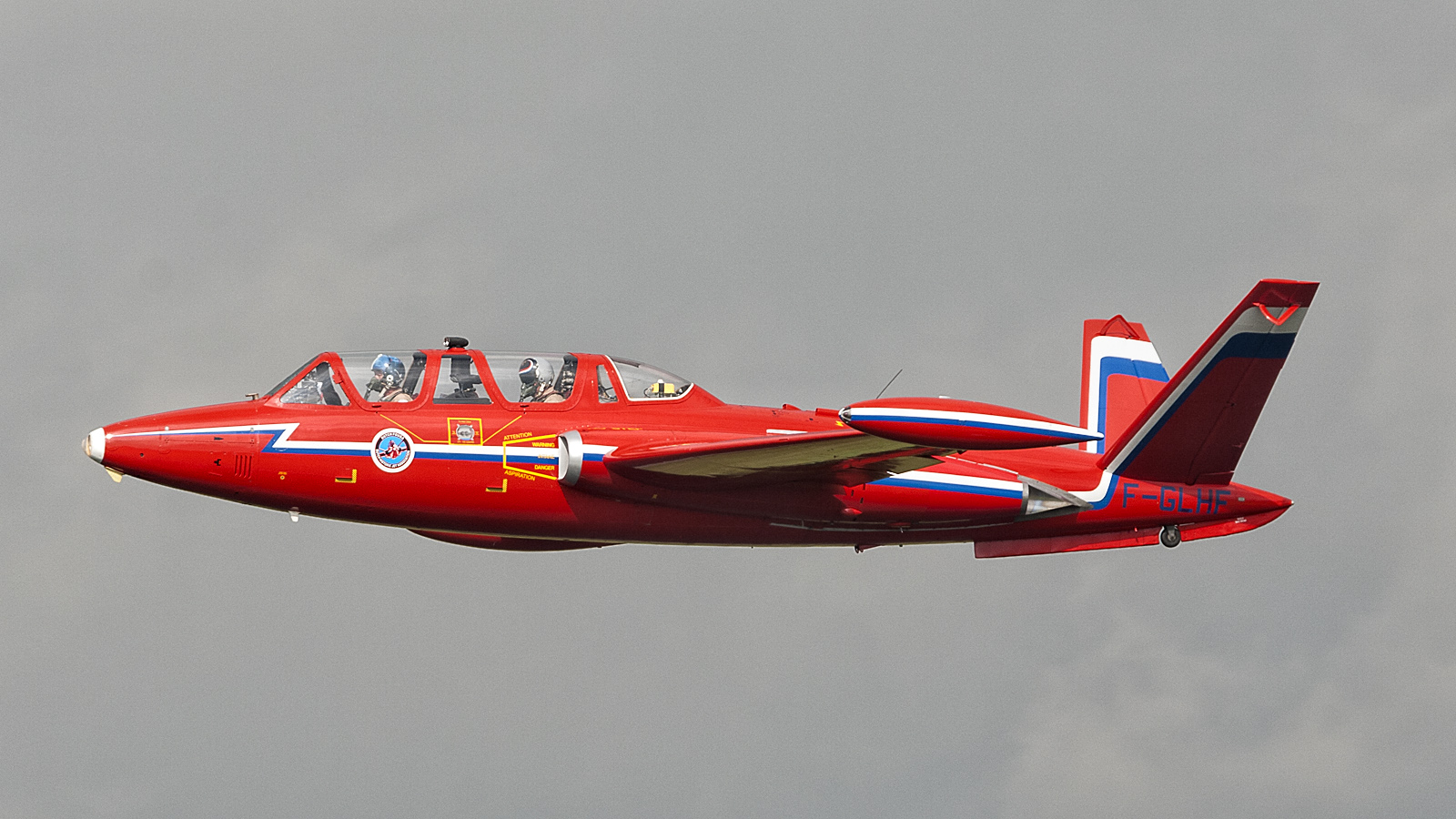
The Fouga CM170 Magister (French for school house) was designed in France as a light two-seat twin-jet trainer withV-tail for the French Air Force.
Developing nation: France.
Manufacturer/designer: Fouga/Pierre Mauboussin.
Production line: closed.
Type aircraft: Jet trainer.
First flight: 23 July 1952.
Number built: 929.
Due to different industrial mergers, the aircraft has been known as the “Fouga CM.170 Magister”, “Potez (Fouga) CM.170 Magister”, Sud Aviation(Fouga) CM.170 Magister” and “Aérospatiale (Fouga) CM.170 Magister” depending on where and when they were built.
The Magister was also built under license in several other nations, including Germany (by Messerschmitt), Finland (by Valmet), and Israel. Israeli Aircraft Industries’ version was initially nicknamed the Snunit (“Swallow”) but this name never caught on and the airplane was later called the “Tzukit” (“Thrush”) after an upgrade program in 1983. Israel also called it the AMIT (Advanced Multi-mission Improved Trainer).
A navalized variant, the CM-175 Zephyr, appeared, fitted with a tail hook and strengthened landing gear to allow aircraft carrier operations. 32 Zephyrs were built for the Aéronavale.
The Magister was of all-metal construction, with mid-mounted straight wings, featuring leading-edge sweep and wingtip tanks; a vee-style “butterfly” tail, with a strakelike ventral fin under the tail; a Marbore II turbojet mounted in a nacelle on each side of the fuselage; a tandem-seat cockpit, with individual rear-hinged clamshell canopies for the aircrew; and hydraulically-actuated tricycle landing gear. There were provisions for mounting twin 7.5 or 7.62 millimeter machine guns in the nose, and there was a pylon under each wing for carrying light external stores, such as a small bomb or small unguided rocket pod.
Operators
- Algeria – Algerian Air Force (28 ex-German aircraft)
- Austria -Austrian Air Force (18 aircraft)
- Bangladesh – Bangladeshi Air Force (8 ex-German aircraft)
- Belgium – Belgian Air Component (50 aircraft)
- Brazil – Brazilian Air Force (7 aircraft)
- Cambodia – Cambodian Air Force (4 aircraft)
- Cameroon – Cameroon Air Force (9 ex-French aircraft)
- El Salvador – El Salvador Air Force (9 ex-Israel aircraft)
- Finland – Finnish Air Force (80 aircraft (18 new and 62 licensed production))
- France – French Air Force (397 aircraft)
- Gabon – Gabonese Air Force (5 ex-German aircraft)
- Germany – Luftwaffe (250 aircraft (62 new and 188 licence production))
- Ireland – (7 ex-Austrian and French aircraft)
- Israel – Israeli Air Force (52 aircraft (16 new and 36 licence production as IAI Tzukit))
- Lebanon – Lebanese Air Force (8 ex-German aircraft)
- Libya – Libyan Arab Air Force (12 ex-French aircraft)
- Morocco – Royal Moroccan Air Force (21 new, ex-French and ex-German aircraft)
- Nicaragua – Nicaraguan Air Force
- Rwanda – Rwandan Air Force (3 ex-French aircraft)
- Senegal – Senegalese Air Force (5 ex-Brazilian aircraft)
- Togo – Togolese Air Force (4 ex-German aircraft)
- Uganda – Ugandan Air Force (12 ex-Israel aircraft)
- Zaire – 4 aircraft
General characteristics
- Crew: Two
- Length: 10.06 m (33 ft 0 in)
- Wingspan: 12.15 m (39 ft 10 in)
- Height: 2.80 m (9 ft 2 in)
- Wing area: 17.30 m² (186.1 ft²)
- Empty weight: 2,150 kg (4,740 lb)
- Loaded weight: 2,850 kg (6,280 lb)
- Max takeoff weight: 3,200 kg (7,055 lb)
- Powerplant: 2× Turbomeca Marboré IIA turbojets, 3.92 kN (880 lbf) each
Performance
- Maximum speed: 715 km/h (386 knots, 444 mph) at 9,000 m (30,000 ft)
- Range: 925 km (500 nmi, 575 mi)
- Service ceiling: 11,000 m (36,080 ft)
- Rate of climb: 17 m/s (3,345 ft/min)
- Wing loading: 165 kg/m² (34 lb/ft²)
- Thrust/weight: 0.28
Armament
- 2x 7.5 mm or 7.62 mm machine guns, 200 rounds/gun
- Up to 140 kg (310 lb) of weapons on two underwing hardpoints, including 50 kg (110 lb) bombs, unguided rockets, and Nord Aviation SS.11 anti-tank missiles.
All pictures courtesy of Zijde Aviation Photo and Publishing, Rob Vogelaar, Marcel van Leeuwen

